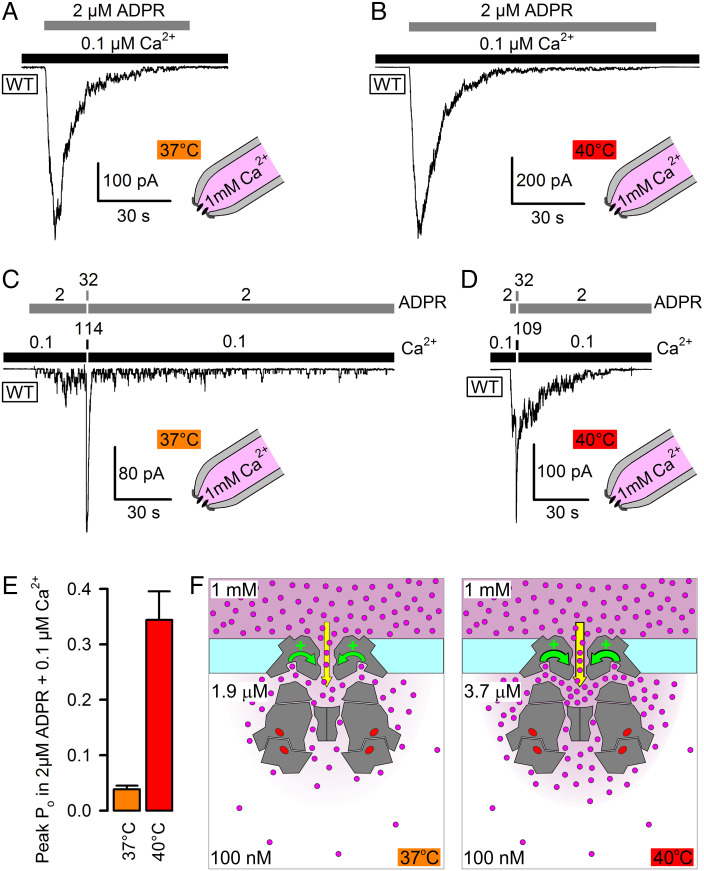Fig. 5.
Positive feedback by Ca2+ influx enhances TRPM2 temperature sensitivity. A–D, Transient activation of macroscopic inside-out patch currents of WT TRPM2 channels at 37°C (A, C) and 40°C (B, D) by cytosolic superfusion with 0.1 μM Ca2+ + 2 μM ADPR, with ~1 mM free Ca2+ present in the extracellular (pipette) solution. In C, D, cytosolic agonist concentrations were briefly (for ~1.5 s) raised to saturating levels (concentrations indicated above bars; in μM). Vm was −80 mV. E, Estimated Po (mean ± SEM, n = 11) of transiently active WT TRPM2 channels at 37°C and 40°C in the presence of cytosolic 0.1 μM (bulk) Ca2+ + 2 μM ADPR and ~1 mM extracellular Ca2+. F, Cartoon representation of WT TRPM2 activity at 37°C (Left) and 40°C (Right). Cross sections through TRPM2 structure (gray) outline the pore, the cytosolic cavity, the activating Ca2+ binding sites, and tunnels connecting these sites to pore and cytosol. Magenta dots, Ca2+ ions; red ovals, ADPR bound to N- and C-sites. Magenta shading scales with local [Ca2+]. At 40°C, higher local [Ca2+] around the activating sites (black numbers) provides stronger positive feedback (curved green arrows) to pore gating.

